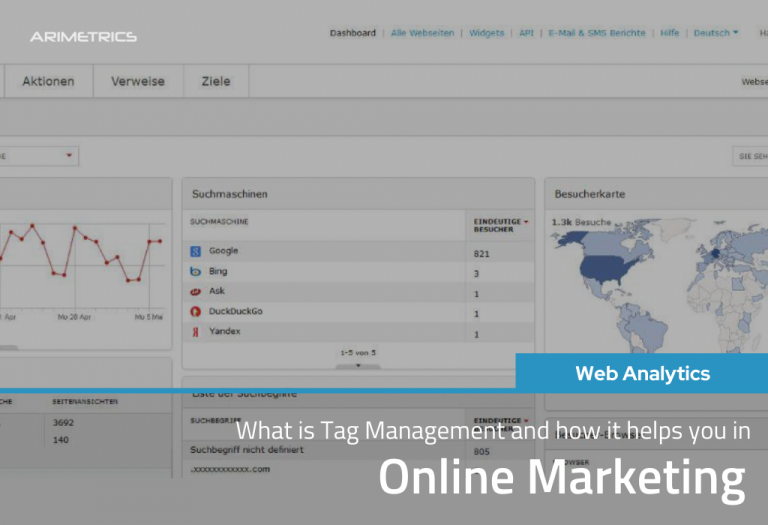Although at first glance it may seem simple, managing and knowing how to effectively manage an ecommerce is really an arduous task. To achieve the highest number of conversions, it is necessary to know how to analyze and take advantage of a series of analytical metrics such as the users who visit you, the estimated time of the visit, the bounce rate or even the route they make within the page, among many others.
Thus, throughout this article, we will show you what metrics to look at to analyze our ecommerce based on our experience as a digital strategy agency. We will see that it is as important to identify it as to know how to optimize them with the Google Analytics tool.
- 1 Why is it important to know how to control analytical metrics in an ecommerce?
- 2 Google Analytics metrics
- 2.1 Metric to analyze #1: transactions
- 2.2 Metric to analyze #2: sessions
- 2.3 Metric to analyze #3: average duration of the session
- 2.4 Metric to analyze #4: Bounce rate
- 2.5 Metric to analyze #5: percentage of output
- 2.6 Metric to analyze #6: average ticket or average order value
- 2.7 Metric to analyze #7: Cart abandonment
Why is it important to know how to control analytical metrics in an ecommerce?
Taking into account the current situation of the digital market, a good analysis of our ecommerce becomes increasingly necessary. And it is that the evolution of electronic commerce in Spain has grown, in recent years, by 217%.
What’s more, according to the latest study by the consultancy PwC, more than half of Spaniards already buy online, at least once a month, and 27% up to once a week. The data speak for themselves, since e-commerce in Spain has not stopped growing for years. For this reason, as we said, it is extremely necessary to know how to control the metrics of an ecommerce.
Take advantage of Google Analytics metrics
Google Analytics is one of the ideal tools to analyze the data of our ecommerce. It is essential to make use and analyze them, since a quantitative measurement will always give us the opportunity to have room for improvement or aspects susceptible to changes.
The good thing about Google Analytics is that it directly provides a code that you can include in all the pages of your ecommerce with a basic configuration. Google itself shows us in a simple way how to configure the tracking code of our e-commerce.
Google Analytics metrics
Metric to analyze #1: transactions
The fundamental KPI for all ecommerce is transactions or sales. With Google Analytics we have the opportunity to measure the number of transactions and revenues that they have generated in our e-commerce, during a certain time.
We can analyze this KPI, through Google Analytics. In the vertical menu on the left, in the conversions part, overview.
Of course, it is important not to confuse transactions with conversions. And it is that while the conversion, although it is positive for our ecommerce, it does not have to generate income, unlike transactions. In other words, transactions would be macro-conversions (revenue generator), while a micro-conversion would be, for example, a lead.
How to optimize this metric:
- Customer loyalty
- Website Speed Optimization
- Improve usability
Optimize the purchase process - Add wishlist
- Adding upselling and crosselling
Metric to analyze #2: sessions
Precisely, in an ecommerce one of the first steps to generate sales is to attract visitors to our website. It is in fact, that of the sessions, one of the main and simplest metrics to see.
We can find it within Google Analytics in the audience section, overview.
As we see in the image, we have the data of users, sessions, bounce rate, etc. In this case, the metric that interests us for our ecommerce are the sessions. Indicator that Google defines as “set of interactions that take place on your website in a certain period”.
It is imperative not to confuse this metric with the number of users. Basically, the difference between users and sessions in Google Analytics is that a user is the number of unique visitors who come to the web. That is, the same user can log in to our ecommerce several times a day.
It is also necessary to look at the graph provided by Google Analytics about new and recurring users. Data that can serve as an indicator that the browsing experience of users has been satisfactory, matching or exceeding their expectations.
How to optimize this metric
- Improving web usability
Create good content in product descriptions, optimized for SEO and that favors indexing. - Create quality content about the products that interest users (specifications, advantages…)
Metric to analyze #3: average duration of the session
Once we know the number of total visits we have in our ecommerce in a given time, we must take into account the quality of them. That is, it is useless to have a multitude of sessions that start in your e-commerce, if there is hardly any activity on the web, either generating macroconversions or microconversions, in fact, a large number of visits of low quality is something counterproductive.
An essential metric for our e-commerce that will shed some light on the quality of our visits is the average time on the page or the average duration of the session.
We see this in the behavior menu, site content, all pages. With this Google Analytics metric we can also look at the average time that users have been on each of our pages.
Thus, with this indicator, we will be able to study in which product pages of our electronic commerce, users have stayed longer.
A low average time can mean several things, that the user experience is not good, that visitors who came to that page did not find what they were looking for, etc.
How to optimize this metric
- Improving the user experience
- Including a related products section
Metric to analyze #4: Bounce rate
Another Google Analytics metric for our ecommerce that can serve as an indicator of the quality of our visits is the bounce rate. This is the percentage of single-page sessions where there has been no measurable user interaction. That is, when someone arrives at a page of our website and then closes it, without going to another page.
It is important to note that a low bounce rate is not always negative. If on a page we include all the necessary information, without the need for the user to do any other action, then the bounce rate will be high, but it will have fulfilled its mission.
On the other hand, if our ecommerce requires users to visit more than one page, a high bounce rate is negative.
Metric to analyze #5: percentage of output
It is also important not to confuse the bounce rate with the output percentage, two web analytics metrics useful for our ecommerce, but that in many cases can be misleading.
The exit percentage shows the rate of users who have finished their visit from a particular page. Let’s take the previous example image: in it we see, how the percentage of outputs of the page ‘basket.html’ is 13.75%. This means that of the total number of visitors who went through the entire website, almost 14 out of 100, ended up on it. That is, they left the page through basket.html, after having browsed other pages.
A low exit percentage means that users have continued to browse the website. While a high rate, means that they have left after having browsed several pages.
Metric to analyze #6: average ticket or average order value
The average ticket or the average value of the order is another of the essential web analytics metrics for our e-commerce. It is calculated by the sum of all orders, divided by the total number of orders, in a given period of time.
Knowing the average ticket is necessary to better align the growth strategies of our e-commerce.
How to optimize this metric:
- Promotions
- Customer loyalty
- Increase of products in the catalog
- Related products
Metric to analyze #7: Cart abandonment
For our e-commerce, Google Analytics offers us another interesting indicator such as the cart abandonment rate.
In the case of cart abandonment, we have the times that users have left their cart without even proceeding to make the payment of the purchase, or enter their data.
What may be affecting a high number of cart abandonments?
- View shipping costs after you start making the purchase
- They abandon the cart having put products in and then postpone their purchase. Hence the importance of wishlists
As we can see, if the purchase process is long and tedious, cart abandonment will inevitably grow.
Google Analytics acquisition channels.
Once we know the number of users who land on our website and their behavior, it is essential to look at the channel they have arrived. We can see this in our Google Analytics panel if we access from the vertical menu on the left through acquisition, all traffic, channels.
As we see in the image, the tool always segments, by default, visits through those channels:
- Organic Search:Web traffic that comes through organic searches on Google.
- Direct: traffic that comes through those people who have entered the URL of our e-commerce in the browser bar.
Social: traffic coming through social media - Referral:traffic that comes to our e-commerce through another source. It can be a link in another domain, be it blogs, websites, etc.
- Affiliates: Traffic that arrives through the affiliate channel.
- Paid Search:it is the traffic of payment, or put more simply, ads in search engines.
- Display:Traffic that comes through a banner and ad within a network of websites (for example the Google Display network)
In addition to these channels, we can also see the traffic that comes to us through email. But what channel includes Social Ads data? If we have our social media campaigns well configured, using UTM tagging, the data will be included in the Social channel. If not, Google can segment Social Ads traffic between Social and Direct.
The traceability of data is an aspect that Google is constantly improving, although it is a topic that we will talk about in future articles.













